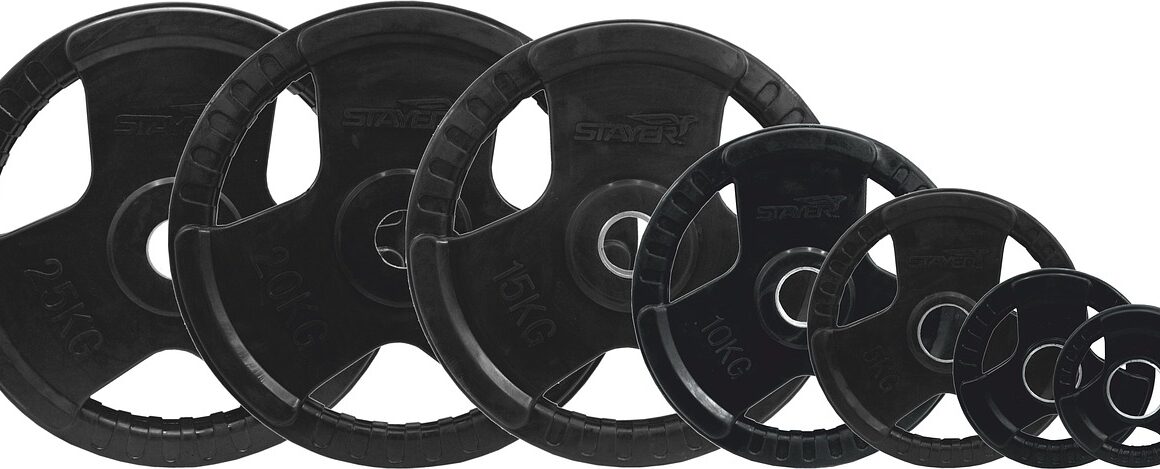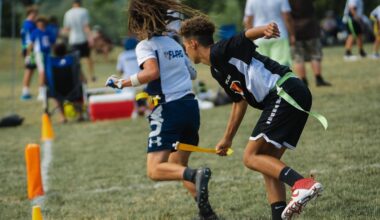Impact of Load Variability on Plyometric Performance Metrics
Plyometric training is a prominent method of enhancing athletic performance. It focuses on rapid, explosive movements to improve strength, power, and agility. A vital component of plyometrics is load variability, which refers to the amount of resistance or body weight utilized during exercises. Understanding how load variability influences performance metrics can help athletes and coaches optimize training methods. For example, some studies reveal that manipulating load can elicit different physiological responses. Finding the ideal load is essential for maximizing training adaptations without risking injury. Athletes can incorporate both high and low load variations into their routine, contributing to diverse adaptations. This multifaceted approach ensures balanced development in strength and explosive power. Coaches should regularly assess performance metrics to determine the effectiveness of various loads. Increased attention to load variability can prevent plateaus in progress. As athletes adapt to specific loads, introducing variability becomes necessary to stimulate further improvements. This article will explore how load variability impacts plyometric performance metrics and suggest effective strategies for measurement.
The performance metrics evaluated in plyometric training include jump height, distance, and overall power output. These metrics gauge an athlete’s explosiveness and efficiency, which are critical for sports performance. During plyometric exercises like box jumps or depth jumps, athletes must observe their metrics closely to tailor their training programs. Variations in load influence these metrics significantly, demonstrating that even small adjustments can yield substantial shifts in performance. Research indicates that lighter loads often provide improved jumping efficiency, while heavier loads may enhance strength. Athletes may discover valuable information regarding their optimal training loads through systematic experimentation. By adjusting load based on individual performance metrics, athletes can steadily progress towards their goals. It is important to use appropriate measuring tools to collect accurate data based on jump performance during these exercises. Such tools can include force plates, accelerometers, and high-speed cameras, among others. These devices allow for precise tracking of performance metrics, enabling athletes to make informed adjustments to their training loads.
A comprehensive understanding of plyometric training is further enhanced by exploring different types of plyometric exercises. Such exercises can generally be divided into three main categories: upper body, lower body, and combined exercises. Each category has specific characteristics that affect the measurement of performance metrics. For example, in lower body plyometrics, jump-related metrics are most applicable as they target leg strength and explosive power. Upper body exercises, on the other hand, may use metrics centered on throwing speed or distance when analyzing performance. Combined exercises necessitate evaluating both upper and lower body metrics for a holistic understanding of athlete performance. When assessing the impact of load variability, coaches should take into consideration their athletes’ specific goals and the types of plyometric movements being applied. Tailoring measurements to match specific exercise categories ensures that data is appropriate and actionable. In particular, focusing on concrete metrics from targeted plyometric workouts will aid in discerning the effectiveness of variable load exercises.
Effectiveness of Load Variability
An effective plyometric program requires balancing load variability with training intensity. Implementing periodized loading schemes can greatly enhance performance metrics. Periodization involves altering loads, volumes, and intensities at specified intervals during the training cycle. This systematic approach ensures consistent adaptation while minimizing risks of overuse injuries. Athletes should identify their thresholds for load tolerance through continuous evaluation of performance metrics. As they progress, incorporating variations will help prevent plateauing in their training. Moreover, employing different load configurations during plyometric exercises can highlight weaknesses, encouraging athletes to address specific areas for improvement. The use of variable loads fortifies the neuromuscular system’s adaptability, promoting more substantial overall gains. To apply this effectively, athletes may design specific cycles focusing on high, medium, and low loads to measure resultant performance metrics. A strategic integration of load variability into their routines can facilitate improvements in explosive power while concurrently reducing injury risk. Therefore, coaches are encouraged to design individualized protocols that utilize appropriate load variability.
Monitoring progress in plyometric training should involve establishing baseline metrics before introducing load variability. After documenting initial performance data, athletes can gradually apply different loads while observing changes in metrics over time. Establishing periodic evaluations helps athletes gauge their progress accurately. Various strategies can improve monitoring effectiveness, such as using mobile apps or digital platforms to document workout details and performance metrics. Having a record of progress charts allows athletes to visualize their improvements and identify patterns over time. Additionally, advanced technology like wearable devices can provide real-time data regarding jumps and explosive movements. Sharing weekly or monthly reports between coaches and athletes can facilitate constructive feedback and inspire adherence to tailored training programs. Furthermore, keeping track of individual improvement can create a sense of achievement, motivating athletes to engage fully in their training. Subsequently, recognizing successful adaptations to load variability may encourage athletes to embrace these principles when pursuing optimal plyometric performance.
Conclusion and Future Research Directions
In conclusion, load variability significantly influences plyometric performance metrics, making it a critical aspect of plyometric training. Coaches and athletes must approach variations in load thoughtfully while remaining mindful of individual needs and responses. The systematic integration of load variability fosters adaptations that enhance performance metrics, ensuring continued growth in strength, power, and agility. It also instills resilience in athletes, equipping them with the tools to manage the demands of sports effectively. Future research should focus on investigating further the dynamics of load variability in relation to long-term performance. Longitudinal studies can provide valuable insights into how consistent exposure to varied loads impacts performance metrics over time. Furthermore, comparative studies exploring load variability’s effects on different athletic populations will also enrich knowledge in this area. Understanding the underlying mechanisms and responses will contribute to refining plyometric training methods. Ultimately, optimizing load variability will empower athletes to reach their maximum potential while minimizing injury risks during their training programs.
The continuous evolution of plyometric training methods calls for a concerted effort towards enhancing performance metrics through load variability. Athletes across different sports can benefit from customizing their training programs according to their specific needs and performance metrics. Collaborative approaches involving athletes, coaches, and sports scientists will ensure the most effective application of load variability principles. The focus should remain on outcomes that demonstrate substantial improvements in performance metrics, facilitating long-term athletic development. Furthermore, utilizing technology and innovative measurement techniques will enhance our understanding of plyometric performance more precisely. This ongoing progression in plyometrics invites both practitioners and researchers to engage actively in the dialogue surrounding optimal training strategies. Engaging in discussions of results, methodologies, and practices will foster a dedicated community striving towards superior plyometric performance and injury prevention. As we uncover the intricacies of load variability, we pave the way for future generations of athletes to achieve their best performance outcomes.
In closing, the world of plyometrics is vast and continually evolving. The understanding of how load variability impacts performance metrics is essential for maximizing an athlete’s potential. By emphasizing the nuances of plyometric training and its effects, coaches can develop more effective programs that optimize athletic output while ensuring injury prevention. Athletes should remain open and adaptive, willing to adjust their training based on measurable metrics. This emphasis on progressive load changes is necessary for sustaining growth in explosive power and performance enhancements. As the research develops, the incorporation of advanced data analytics can further refine training protocols. Improved technologies facilitate the acquisition of granular performance data, paving the way for customized strategies. The future of plyometrics relies on the cultivation of knowledge surrounding load variability and its measurement. With each new discovery, we move closer to unlocking the full capacity of plyometric training’s influence on athletic performance. Preparing for this exciting future will involve continuous learning, collaboration, and adaptation among athletes, coaches, and sports professionals.


